Dupa plasarea solicitării de comandă, in sectiunea Istoric puteti vedea cate solicitări de comandă mai avem de procesat inaintea dumneavoastra
Program de lucru: Luni - Vineri 9:00 - 18:00, pauza 13:00 - 14:00.
Se efectueaza lucrari de mentenanta la site si pot aparea erori. In cazul in care intampinati erori va rugam sa reincercati mai tarziu.
Ridicarea personala este disponibila pentru comenzile achitate in avans. Se pot ridica dupa ce sunt pregatite.
No products
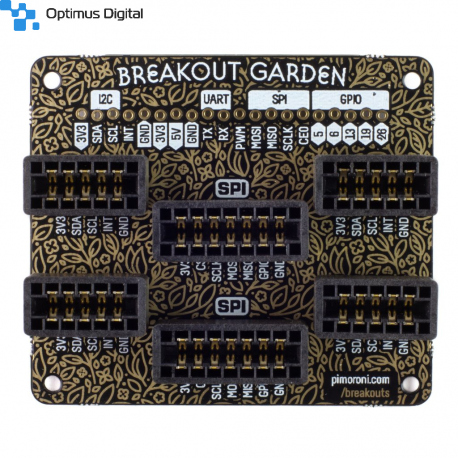 View larger
View larger
Breakout Garden HAT (I2C + SPI)
606034879102
New product
Now with SPI! Grow your projects on Breakout Garden. It's the easiest way to use breakouts with your Raspberry Pi. There's no soldering required, just pop up to six Pimoroni breakouts (4xI2C, 2xSPI) into the slots on Breakout Garden and get started coding and creating.
See description for more details about the product.
Add to cart now!
2 Items
Warning: Last items in stock!
- Write a review
- Remove this product from my favorite's list.
- Add this product to my list of favorites.
More info
Descriptions
Now with SPI! Grow your projects on Breakout Garden. It's the easiest way to use breakouts with your Raspberry Pi. There's no soldering required, just pop up to six Pimoroni breakouts (4xI2C, 2xSPI) into the slots on Breakout Garden and get started coding and creating.
It's ideal for prototyping projects without the need for complicated wiring, soldering, or breadboards, and you've always got the option of changing your setup thanks to the way that Breakout Garden works.
The six sturdy slots on Breakout Garden are edge connectors that connect Pimoroni breakouts to the pins on your Raspberry Pi. This new version of Breakout Garden has two SPI slots for Pimoroni SPI breakouts like our 0.96" LCD Breakout.
It's also got four I2C slots for Pimoroni I2C breakouts. Because I2C is a bus, you can use multiple I2C devices at the same time, providing they don't have the same address (we've made sure that all of our breakouts have different addresses).
We've also broken out a load of useful pins along the top of Breakout Garden, so you can connect other devices and integrate them into your Breakout Garden projects. If you have Pimoroni breakouts to which you've already soldered headers, then you can use this top row of pins to use them alongside other breakouts on Breakout Garden.
Features
- Six sturdy edge-connector slots for Pimoroni breakouts
- 4x I2C slots (5 pins)
- 2x SPI slots (7 pins)
- 0.1” pitch, 5 or 7 pin connectors
- Broken-out pins (1x10 strip of male header included)
- Standoffs (M2.5, 10mm height) included to hold your Breakout Garden securely
- Reverse polarity protection (built into breakouts)
- HAT format board
Using Breakout Garden
We'd suggest using the included standoffs to attach Breakout Garden firmly to your Raspberry Pi. Pop the screws through the mounting holes on your Raspberry Pi, from below, and then screw the standoffs onto the screws. Push Breakout Garden onto your Pi's GPIO pins, and then screw through each mounting hole into the standoffs to hold everything steady and secure.
Because of the way that I2C (the protocol that Breakout Garden uses) works, it doesn't matter which slot on Breakout Garden you plug your Pimoroni breakout into. Each I2C device has an address (you'll see it on the back of each breakout) that it uses to identify itself to other I2C devices, so it's effectively saying to your Raspberry Pi, "Hey, it's me, Bob!"
SPI is a faster, higher-throughput protocol for talking to devices like displays. The two SPI slots have different chip select (CS) and GPIO pins that you should change in software, depending on which slot you're using.
The top/back slot (closest to the Breakout Garden logo) uses chip select 0 (BCM 8) and BCM 18 for the GPIO (used for things like LCD backlights) pin. The bottom/front slot uses chip select 1 (BCM 7) and BCM 19 for the GPIO pin.
We've built reverse polarity protection into our Pimoroni breakouts, meaning that there's no magic blue smoke if you accidentally plug one in the wrong way round. However, the correct way to plug them in is to make sure that the labels on the pins on your breakout and the labels on each Breakout Garden slot match up.
Don't delay. Buy today.
Add to cart now!
Reviews
Customers who bought this product also bought:
-
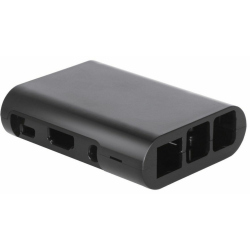
Black Case...
Black Case for Raspberry Pi 3 Model B+ See...
4,99 lei
-
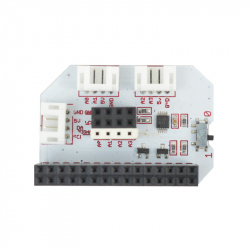
ADC Expansion
The Omega ADC Expansion will bring a new world...
49,99 lei
-
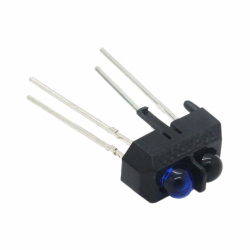
TCRT5000...
The TCRT5000 reflective photoelectric sensor...
1,49 lei
-
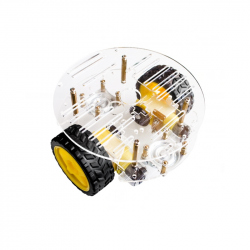
Round Robot Kit
Round Robot Kit
49,99 lei
-
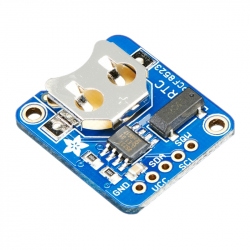
PCF8523...
This is a great battery-backed real-time clock...
44,99 lei
-
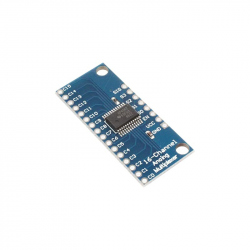
CD74HC4067...
CD74HC4067 16 Channel Analog Multiplexer Module...
5,77 lei
-
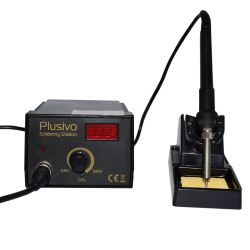
Plusivo...
Plusivo Digital Soldering Station
189,00 lei
-
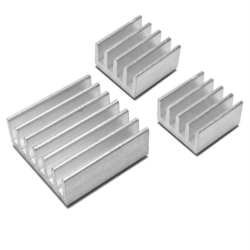
3 Heatsinks...
Radiator for Raspberry Pi 3 helps keep...
3,52 lei
-
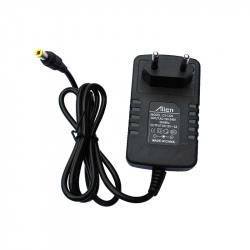
12 V 2000 mA...
12 V 2000 ma Stabilized Power Supply See...
24,99 lei
-

Linux and...
Onion Omega2 development board with a Linux...
59,99 lei


